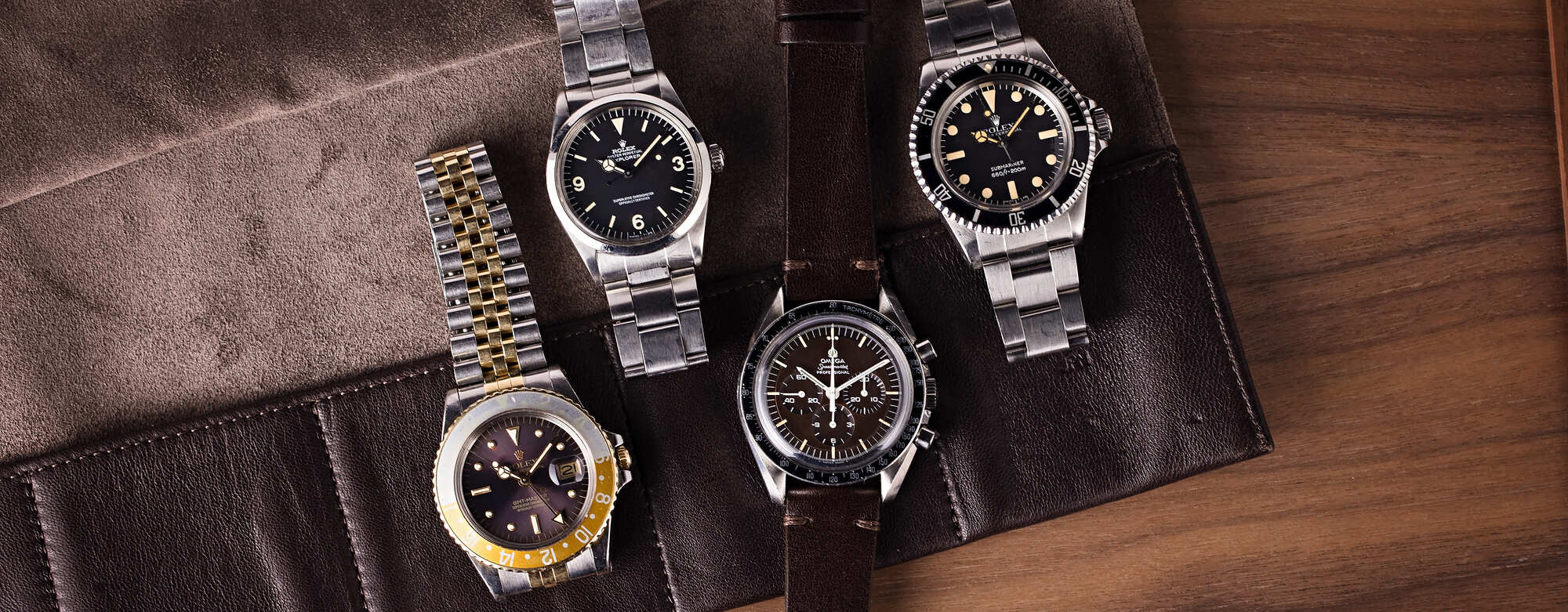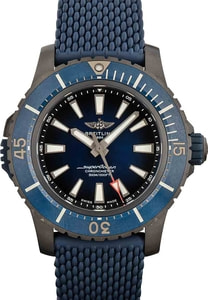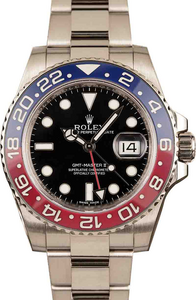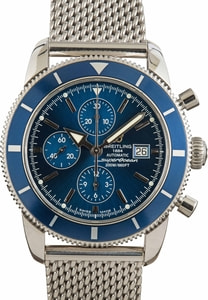When it comes to luxury watchmaking, two Swiss brands stand out as the ultimate symbols of prestige and excellence: Patek Philippe and Rolex. Both have rich histories dating back over a century, and each has played a significant role in shaping the world of horology as we know it today. When comparing Rolex vs Patek, they are seen as some of the best Swiss watch brands around, but both brands have significant differences worth noting when deciding which to purchase.
While both Rolex and Patek Philippe are some of the best watches for men and women too, they are also both undeniably prestigious, catering to different segments of the luxury watch market and have distinct areas of expertise. This article will delve into the histories, philosophies, signature models, and market positioning of Rolex vs Patek Philippe to help readers understand what sets them apart and why they continue to capture the hearts and minds of watch enthusiasts worldwide.
Patek Philippe vs Rolex: Brand Histories and Philosophies

Founded by Hans Wilsdorf and Alfred Davis, Rolex’s story begins in 1905, and through the decades Rolex has become a household name synonymous with both luxury and success. The brand is renowned for its innovative, high-performance sports and tool watches, such as the iconic Submariner, Daytona, and GMT-Master II. These timepieces are designed to withstand the most challenging conditions while maintaining exceptional accuracy and reliability.
On the other hand, Patek Philippe’s history dates to 1839, and was established by Antoni Patek and Adrien Philippe. Patek is often regarded as the pinnacle of traditional Swiss watchmaking. The brand is celebrated for its exquisite craftsmanship, complicated movements, and elegant timepieces. Patek Philippe’s creations, such as the sporty Nautilus and Aquanaut, as well as the classic Calatrava, are revered for their timeless designs and unparalleled attention to detail.
Rolex Signature Models and Designs
Rolex has created a wide range of iconic models that have become synonymous with the brand’s commitment to performance, reliability, and prestige. Some of the most notable models include:
Rolex Submariner

Introduced in 1953, the Rolex Submariner watch is the archetypal dive watch, designed to withstand the rigors of underwater exploration. Its rugged construction, rotating bezel, and legible dial have made it an icon of sports watches and a favorite among professionals and enthusiasts alike. Check out our Rolex Submariner pricing guide for detailed and updated prices.
Rolex Daytona

Launched in 1963, the Rolex Daytona collection is a chronograph watch line designed for motorsports. Its sleek, sporty design and highly accurate chronograph movement have made it a must-have for racing enthusiasts and collectors. The Daytona’s association with actor Paul Newman has also led to the watch model’s celebrity status.
Rolex GMT-Master II

First introduced in 1954, the Rolex GMT-Master II is a dual-time watch designed for pilots and frequent travelers. Its distinctive two-tone bezel and additional 24-hour hand allow the wearer to track multiple time zones simultaneously. The GMT-Master II has become an icon of luxury travel and a symbol of globetrotting style. Visit our Rolex GMT-Master II Ultimate Buying Guide for more information on GMT-Master II models.
Rolex Day-Date

Released in 1956, the Rolex Day-Date watch line is Rolex’s flagship dress watch collection, often referred to as the Rolex “President” watch due to its association with numerous world leaders. Available only in precious metals, the Day-Date features a full day display at 12 o’clock and a date window at 3 o’clock, making it a practical and prestigious choice for those who appreciate the finer things in life.
Rolex Sky-Dweller
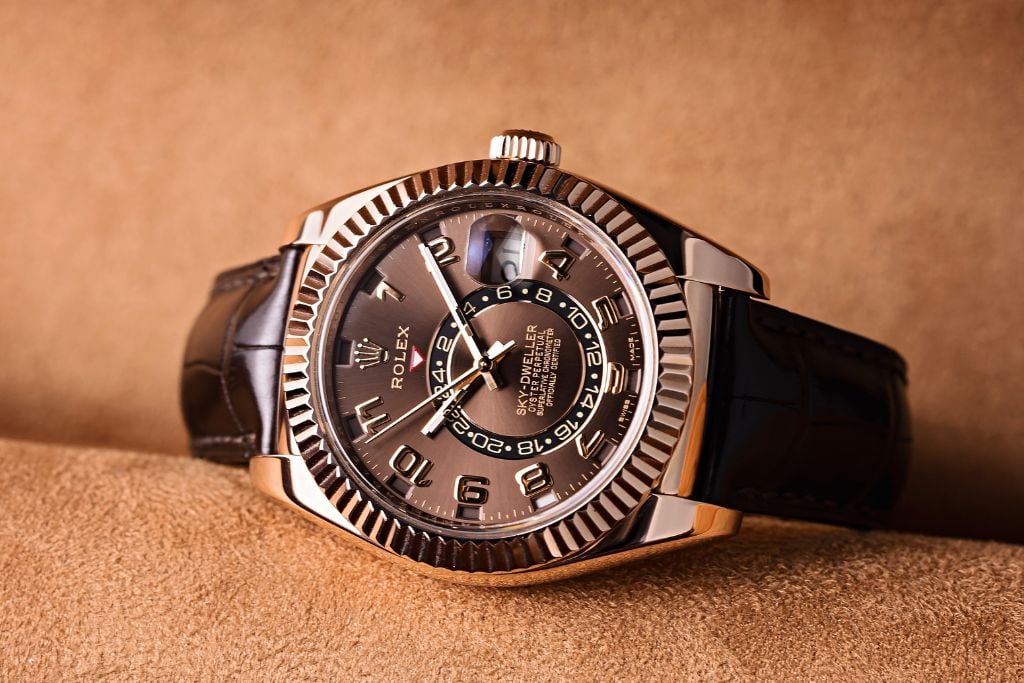
Introduced in 2012, the Rolex Sky-Dweller watch is a highly sophisticated and innovative timepiece that combines a dual time zone display with an annual calendar function. This complex timepiece, available in precious metals, is designed for global travelers and features a distinctive rotatable Ring Command bezel for setting its various functions. The Sky-Dweller showcases Rolex’s technical prowess and its ability to create watches that blend functionality with luxury.
Patek Philippe Signature Models and Designs
Patek Philippe has created numerous iconic models throughout its history, each showcasing the brand’s commitment to excellence in design and craftsmanship. Some of the most notable models include:
Patek Philippe Calatrava

Introduced in 1932, the Patek Philippe Calatrava collection is the quintessential dress watch line, embodying Patek Philippe’s timeless elegance and understated sophistication. With its sleek, round case and minimalist dial, the Calatrava has become a symbol of refined taste and classic style.
Patek Philippe Nautilus

Launched in 1976, the Patek Philippe Nautilus line was the brand’s first luxury sports watch collection, designed to combine ruggedness with elegance. Its distinctive porthole-shaped case, integrated bracelet, and horizontal embossed dial have made it an instant classic and a highly sought-after timepiece among collectors.
Patek Philippe Aquanaut

Released in 1997 as a more casual and modern alternative to the Nautilus, the Patek Philippe Aquanaut watch features a rounded octagonal case and a “tropical” strap made of durable composite material. Its bold, contemporary design has made it a favorite among younger watch enthusiasts.
Patek Philippe Complications

Patek Philippe’s Complications models showcase the brand’s mastery of intricate watchmaking. These timepieces feature a range of advanced functions, such as annual calendars, chronographs, and dual time zones, all skillfully integrated into beautifully designed and meticulously crafted watches. The Complications line demonstrates Patek Philippe’s ability to combine technical excellence with aesthetic refinement.
Patek Philippe vs Rolex: Market Positioning and Production

Rolex: Balancing Accessibility and Desirability
Rolex has positioned itself as a slightly more accessible luxury brand compared to Patek, producing around 1.1 million watches annually as of 2022, up from 1 million in 2017. While this is substantially higher than Patek Philippe, it is still relatively low compared to mass-market watch brands.
Despite its higher production, Rolex experiences significant supply shortages due to high global demand. This scarcity, combined with the brand’s reputation for quality and prestige, has led to a thriving secondary market, with many Rolex models becoming great investment pieces.
Rolex’s pricing strategy maintains its luxury status while making its watches more attainable for a broader range of consumers. By offering a wide variety of models at different price points, Rolex has successfully positioned itself as both aspirational and accessible, contributing to its enduring popularity and market dominance.
Patek Philippe: Exclusivity and Scarcity
Patek Philippe is renowned for its highly exclusive and rare timepieces, catering to discerning collectors and connoisseurs. The brand maintains a low production volume to ensure scarcity and prestige. As of 2022, Patek Philippe produces approximately 62,000 watches per year, a slight increase from 58,000 in 2017. This limited production is a deliberate strategy to maintain the brand’s reputation and ensure its timepieces retain their value.
Patek Philippe’s pricing reflects its commitment to exclusivity, with many models commanding substantial premiums on the secondary market. The brand’s most complicated and rare timepieces, such as the Grandmaster Chime and the Sky Moon Tourbillon, can fetch millions at auction, cementing Patek Philippe’s status as one of the most collectible watch brands in the world.
Patek Philippe vs Rolex: Craftsmanship and Innovation

Rolex: Pioneering Technical Advancements
While Rolex is also known for its exceptional craftsmanship, the brand has a stronger focus on technical innovation and performance. Throughout its history, Rolex has been responsible for numerous groundbreaking developments in watchmaking, many of which have become industry standards.
One of Rolex’s most significant innovations is the Oyster case, introduced in 1926. This waterproof case, featuring a screw-down crown and case back, revolutionized the watch industry and set a new standard for durability and reliability. Rolex has continued to refine and improve the Oyster case over the years, ensuring that its watches can withstand even the harshest conditions.
Another area where Rolex has made significant strides is in the development of new materials and technologies. The brand has patented numerous proprietary alloys, such as Oystersteel, Everose gold, and Cerachrom, which offer superior strength, corrosion resistance, and aesthetic appeal. Rolex has also developed innovative movement technologies, such as the Parachrom hairspring and the Chronergy escapement, which enhance the precision and reliability of its calibers.
Rolex’s commitment to innovation extends beyond its watches and into its manufacturing processes. Rolex has invested heavily in state-of-the-art facilities and equipment, allowing it to produce virtually every component of its watches in-house to the most exacting standards. This vertical integration ensures unparalleled quality control and enables Rolex to continuously improve its production methods and implement cutting-edge technologies.
Patek Philippe: Preserving Traditional Watchmaking
Patek Philippe is celebrated for its unwavering commitment to traditional watchmaking techniques and its pursuit of perfection in every timepiece. The brand’s master craftsmen combine centuries-old skills with cutting-edge technology to create some of the world’s most exquisite and complicated watches.
One of Patek Philippe’s most impressive areas of expertise is its rare handcrafts department, where skilled artisans employ age-old techniques such as enameling, engraving, and guilloché to create truly unique and beautifully decorated timepieces. These traditional skills are becoming increasingly rare in the modern watchmaking industry, making Patek Philippe’s commitment to preserving them even more significant.
In addition to its focus on traditional craftsmanship, Patek Philippe is also a leader in horological innovation. The brand has a long history of pioneering new complications and movements, such as the world’s first perpetual calendar wristwatch and the first double chronograph. Today, Patek Philippe continues to push the boundaries of mechanical watchmaking with groundbreaking creations like the Grandmaster Chime, which features 20 complications and is one of the most complex wristwatches ever created.
Patek Philippe vs Rolex: Expert Opinions and Collectability

Overall, the expert opinions and collectability of Rolex vs Patek Philippe watches underscore the enduring appeal and value of these two iconic brands. While they may cater to different segments of the market, both Rolex and Patek Philippe have firmly established themselves as leaders in the world of luxury watchmaking, and their timepieces continue to captivate collectors and enthusiasts around the globe.
Insights from Industry Experts
Obviously, Pateks are more expensive, but that doesn’t necessarily make them “better” in the grand scheme of things. “Patek has been making watches for 180 years, while Rolex has only been around for 110,” notes Bob’s Watches founder and renowned Rolex collector, Paul Altieri.
“But in that time they’ve eclipsed any other luxury watchmaker. Patek may still be tops in terms of pure prestige, but Rolex is more iconic and much cooler. Picasso wore a Patek, but everyone from Sir Edmund Hillary to James Bond and Steve McQueen wore a Rolex – men of action, with effortless style and lethal charm. The watches have a rugged masculinity to them, and they’re extremely capable tools as well. There’s really no other watch that measures up.”
Rolex fans would of course agree, but what about other industry experts with a more objective point of view? The New York Times was curious about the very same question and convened an impressive panel including Saori Omura, director of Antiquorum New York’s watch department, John Reardon, international head of watches at Christie’s, and Daryn Schnipper, senior vice president and chairwoman of the international watch division at Sotheby’s, along with well-regarded dealer Matthew Bain of Matthew Bain Inc. in Miami. Here’s what they had to say.
Patek fiercely guards its reputation and does not cater to market whims, as Patek President Thierry Stern made clear in our article recently. Schnipper notes that Patek takes very good care of its customers and supports its pieces with archival extracts and other material. “That’s a hard thing to get from other brands,” Schnipper tells the paper. “There’s that comfort level if you’re going to spend a lot of money: You have a lot more information about the piece. It’s very hard to have a fake Patek, an out-and-out fake.”
While it is more common to spot a fake Rolex, there are still plenty of ways to counteract it. Patek “invested a lot more into the brand,” Bain adds. “Rolex does, with advertising, and so does Patek, but I think Patek invested in the heritage of their brand more than Rolex has.”
There was an interesting response when The Times posed the question, “Let’s say someone had $10,000 to invest in a vintage watch: What would you advise them to buy?” The three auction house bigwigs all answered Patek without hesitation. But Bain dissented: “I’d say a Rolex sports model would be a great investment. For example, if you get a basic Rolex GMT or Submariner for $10,000 from a trusted source” – such as Bob’s Watches – “a great example in mint condition, it’s going to be worth double in the next five to seven years. That’s my opinion. You can buy a mint condition Submariner reference 5513 from 1975 for $10,000.”
As far as the future for vintage watches, Ms. Omura of Antiquorum is fully in Rolex’s corner. “In the next six months to a year, for any one of us here, it’s the Rolex sports model – there’s no question,” she states. “People speculate: They’re looking for a lot of things as investments. They buy something because they think it’s going to double in value.” And a vintage Rolex Daytona, for example, is a pretty sure thing.
The Collectability Factor
With Rolex vs Patek, both watch brands are highly prized by collectors, but for somewhat different reasons. Patek Philippe timepieces are often seen as the ultimate expression of horological artistry and craftsmanship, with the brand’s most complicated and rare models commanding astronomical prices at auction. The exclusivity and scarcity of Patek Philippe watches, combined with the brand’s storied history and reputation for excellence, make them highly desirable among serious collectors.
Rolex, on the other hand, has a broader collector base due to its more accessible price points and the enduring popularity of its iconic models. Vintage Rolex watches have seen a surge in collectability in recent years, with models like the Paul Newman Daytona and the Steve McQueen Explorer II achieving record-breaking prices at auction, ultimately leading them to join some of the most expensive Rolex watches the world has ever seen.
One factor that contributes to the collectability of both brands is their ability to retain and appreciate in value over time. Many Rolex and Patek Philippe models have proven to be sound investments, with their prices consistently rising on the secondary market. This stability and potential for growth make these watches attractive to collectors and investors alike.
Final Thoughts: Patek Philippe vs Rolex

In this comprehensive comparison of Rolex vs Patek Philippe, we’ve explored the rich histories, signature models, market positioning, craftsmanship, and collectability of these two horological giants. While both brands represent the pinnacle of luxury watchmaking, they each have their own unique strengths and appeal to different segments of the market.
Patek Philippe, with its focus on traditional watchmaking techniques, complicated movements, and exclusive production, caters to the most discerning collectors and connoisseurs. The brand’s commitment to preserving the art of horology and its reputation for creating some of the world’s most exquisite timepieces have solidified its position as the ultimate symbol of horological prestige.
Rolex, on the other hand, has built its success on a foundation of innovation, reliability, and iconic design. With its pioneering technical advancements, robust construction, and instantly recognizable aesthetic, Rolex has become synonymous with luxury and achievement. The brand’s more accessible price points and broader range of models have made it a favorite among enthusiasts and collectors alike.
Ultimately, the choice between a Patek vs Rolex comes down to personal preference and individual priorities. Those who value traditional craftsmanship, exclusivity, and the allure of owning a piece of horological history may gravitate towards Patek Philippe. Meanwhile, those who appreciate innovation, durability, and the timeless appeal of an iconic design may find Rolex to be the perfect fit.
Regardless of which brand one chooses, both Rolex and Patek Philippe offer an unparalleled combination of quality, prestige, and enduring value. These watches are more than just timekeeping devices; they are investments, heirlooms, and symbols of personal style and success. Whether passed down through generations or treasured as a personal milestone, a Rolex or Patek Philippe watch is a testament to the enduring legacy of these two remarkable brands.





